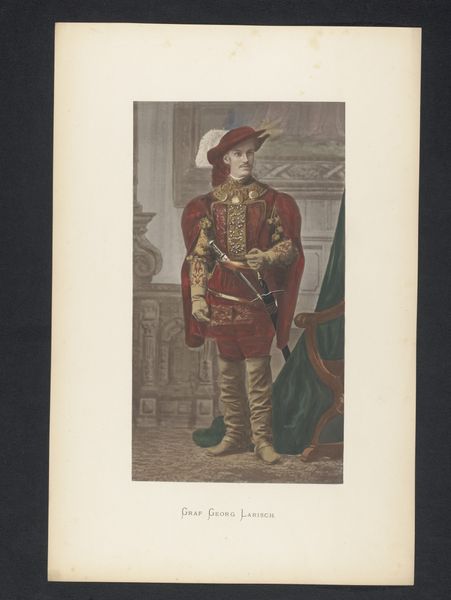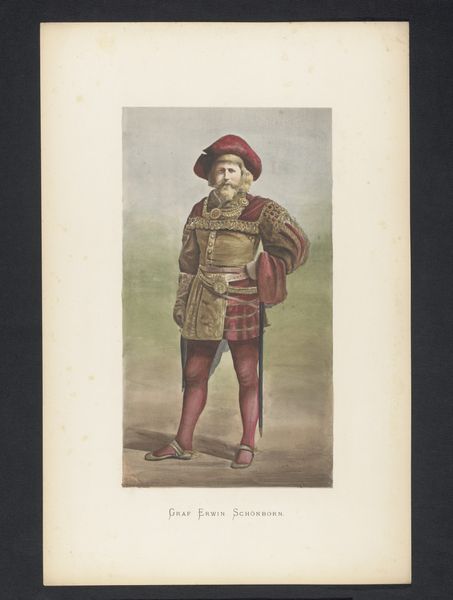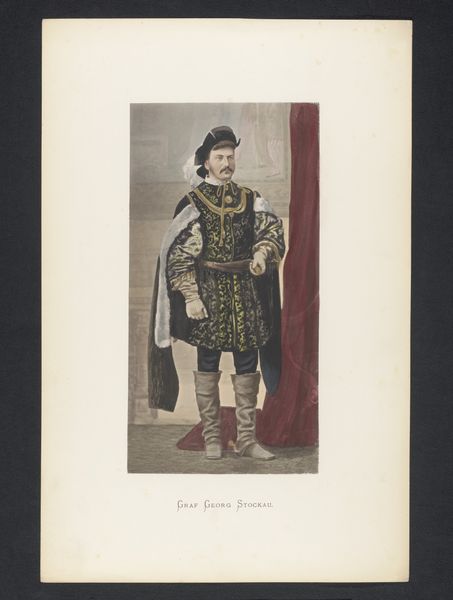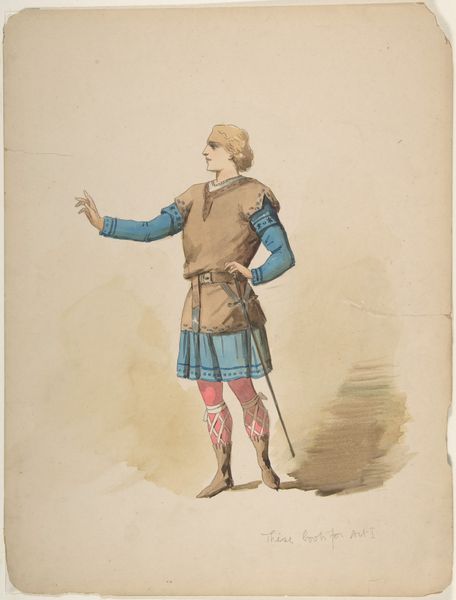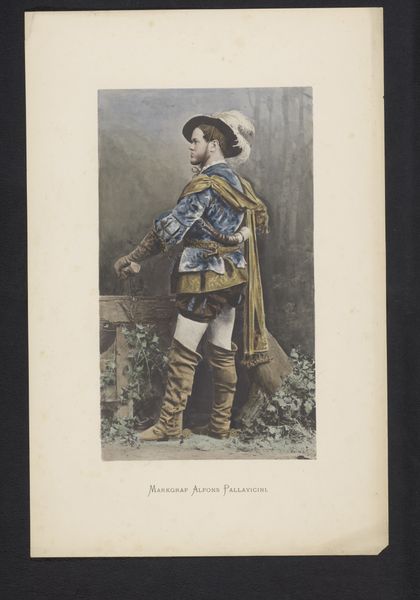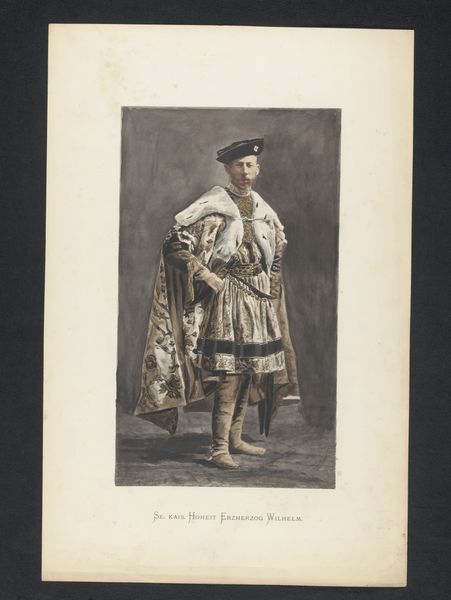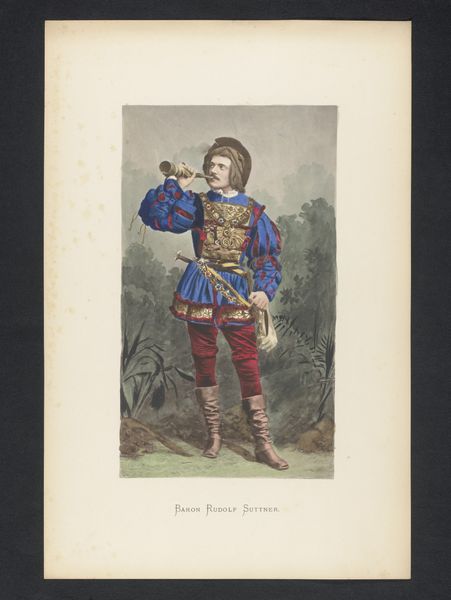
print, paper
#
portrait
#
aged paper
#
antique finish
#
paper non-digital material
#
pale palette
#
muted colour palette
# print
#
impressionism
#
white palette
#
paper texture
#
paper
#
folded paper
#
letter paper
#
paper medium
Dimensions: height 367 mm, width 184 mm
Copyright: Rijks Museum: Open Domain
This striking portrait of Count Kálmán Hunyady de Kéthely was printed anonymously, using the technique of chromolithography. Chromolithography, which translates to ‘colored stone print,’ allowed for the mass production of images like this one. Colors are built up through the layering of multiple stones, one for each color, each carefully drawn and etched. Look closely, and you’ll see a stippled effect, a consequence of the lithographic process. Unlike painting, where the artist blends hues intuitively, here the color is regimented, applied in distinct layers. This was a breakthrough at a time when color images were rare and expensive, democratizing visual culture. This method was a product of the Industrial Revolution, and it reflects wider social issues of labor and consumption. It allowed for the mass production of images, reflecting the shift towards a capitalist mode of production. The print challenges our traditional understanding of art, inviting us to consider the social and cultural impact of mass-produced images, and the labor involved in their creation.
Comments
No comments
Be the first to comment and join the conversation on the ultimate creative platform.




